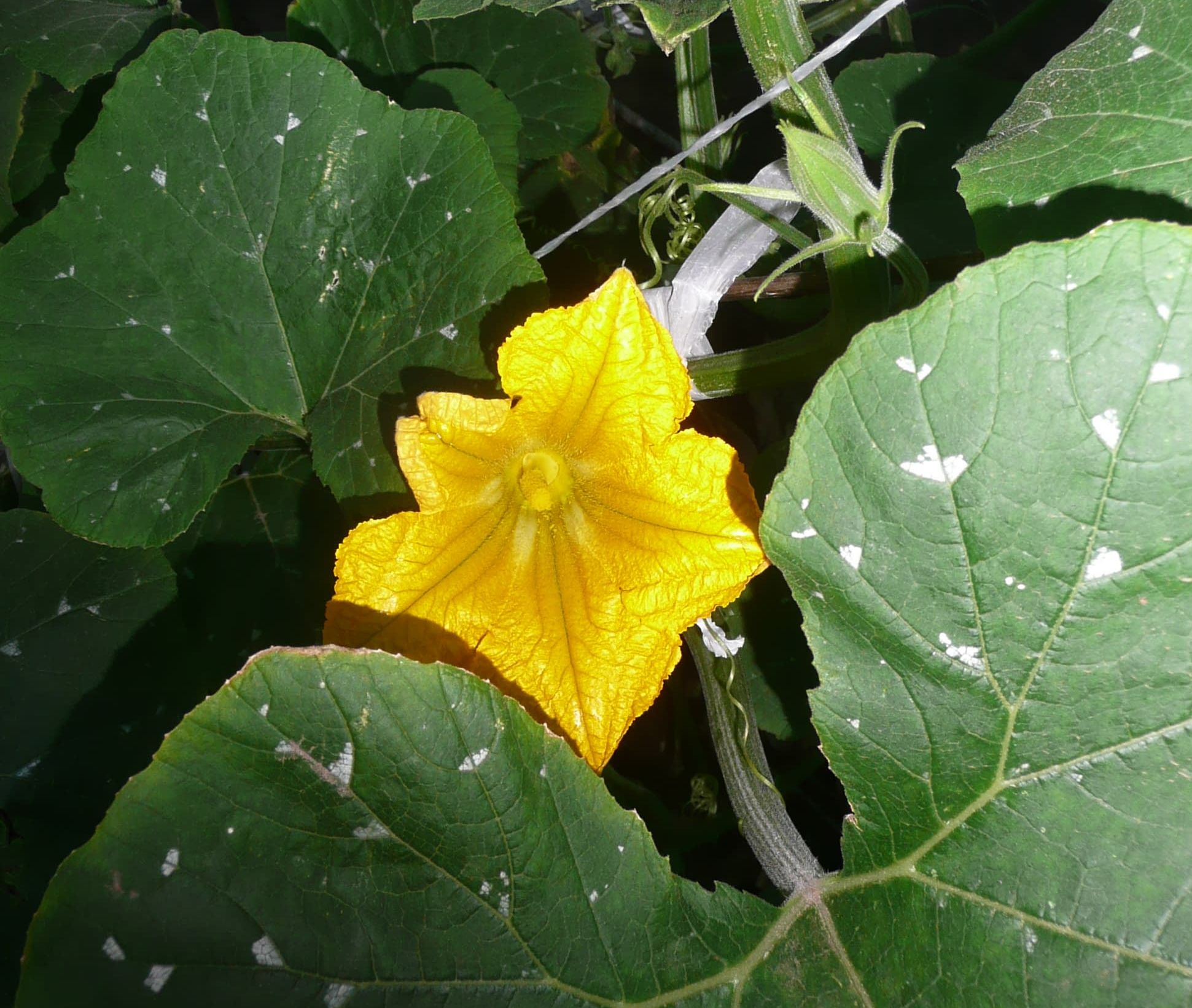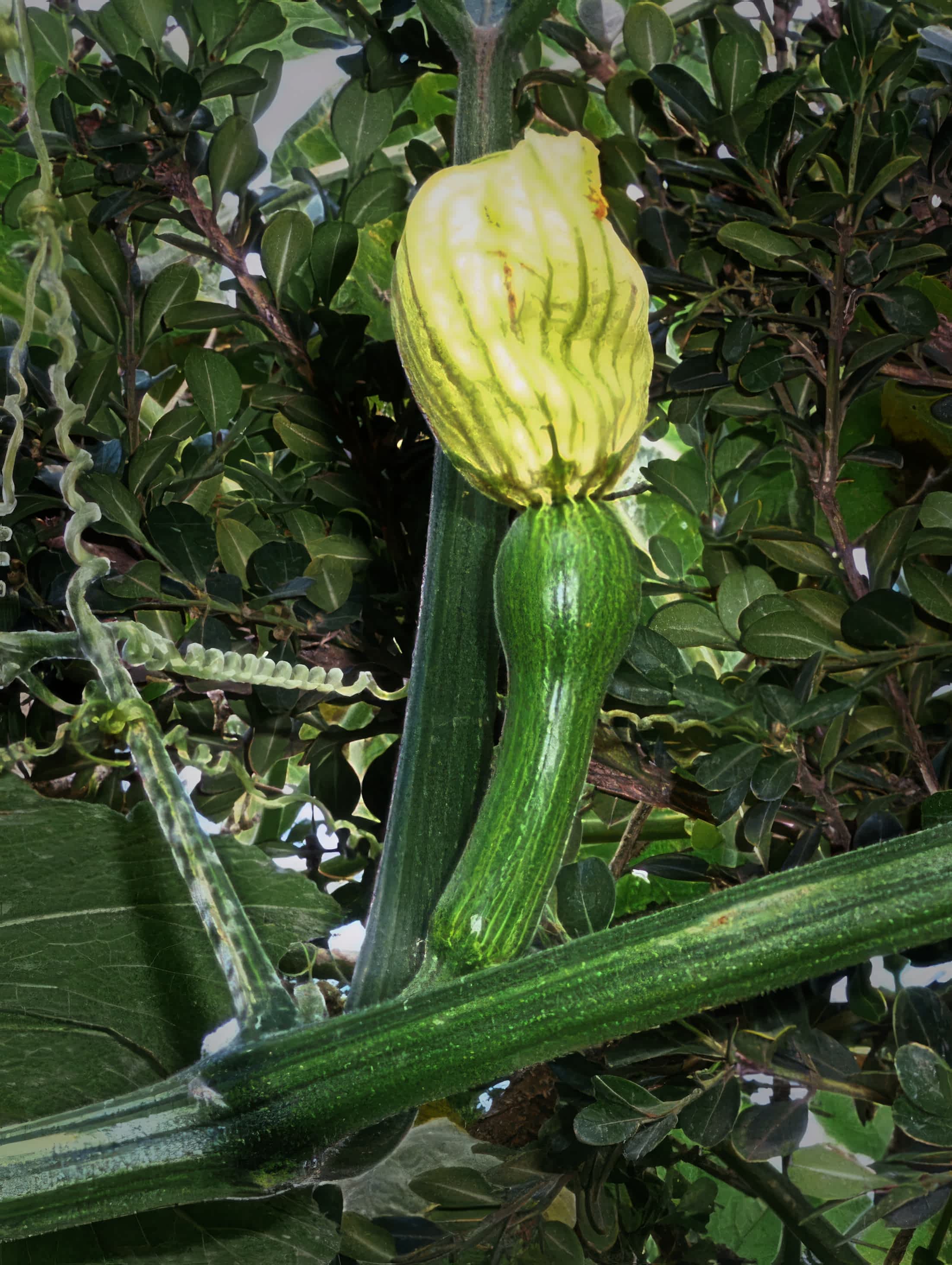Selection
This section explores ways to identify exceptional plants among the population (a process known as “selection”). In order to understand how selection relates to sexual propagation in squash, this section incorporates concepts related to manual and open pollination.
In this guide, “selection” refers to actions taken by the gardener to choose which plants should be prioritized, which might be manually “crossed” together in the pursuit of a hybrid, and which plants should be culled or eliminated.
Not many fruits?
If you are just starting to grow cushaws, you may only harvest one or two fruits. One term for this stage of an adaptation project is “seed increase”, when the grower might save seed from most or all fruits to maximize genetic diversity, even if some seem better than others.
In subsequent years with more fruit to choose from, the grower can be more selective. In the future, with more fruit to choose from, a grower can choose to prioritize saving seeds from the tastiest and earliest fruit, or those plants that are hardiest in their ecosystem, or the plants that have the tastiest or most beautiful foliage.
Maintaining genetic diversity in an adaptive population
If you are planning to enjoy the cushaw fruit as a winter squash, you may not be processing all of your fruit at one time. You may instead be processing seeds at several points through the winter as you use the fruit in your kitchen. Winter squash cushaws are often stored for several months before use; how long the fruit can be stored at culinary quality is one of the attributes that is often important when making selections for seed saving.
If you have a variety of mature fruit to choose from, it’s best to not let any single fruit’s seeds dominate next season’s mix. Consider the total number of seeds you want to save and aim for a proportional mix from different fruits. The best fruit should contribute more seeds, and fruit that only met minimum standards should contribute proportionally fewer seeds.
Bear in mind that some fruit will naturally contain many seeds while others will have fewer, which you can determine only by cutting them open to use. It may turn out that a squash with relatively few seeds has a particularly desirable attribute.
Selection for an established variety
The work of selection is focused two processes: elimination – or “roguing” – plants with undesirable characteristics, and making sure to save ample seed from plants which do have the desired attributes.
Selection for a new variety
When developing or improving a genetic line, selection might instead be focused on what to include. In this scenario it is most important to identify and prioritize plants that stand out from the rest in positive ways.
Selecting cushaws
These are some cushaw squash traits that the grower can consider during the course of the season:
- Fruit size, shape, and color
- Seed size, shape, and quantity
- How vigorously does it grow
- How early and prolifically the vine produces fruit
One option is to tie strips of bright cloth or bright-colored survey flagging tape to plants that the gardener has selected or want to monitor. Some gardeners also write directly on the maturing fruit to keep track of individuals with promising characteristics.
Squash genetics and pollination
If you have two or more plants which demonstrate exceptional characteristics, you might consider manually cross pollinating them.
Squash plants have separate male and female flowers, and usually both types can be found on healthy adult squash plants. The ‘mother’ flower contributes the unfertilized fruit which develops between the flower and the stem. The ‘father’ flower is attached to the vine by a long stem and appears earlier than female flowers, and can be on the same plant or another plant.
What other squash will cushaws cross with?
Cushaws of species C. argyrosperma have been noted in English scientific literature to form hybrids with Cucurbita maxima and Cucurbita pepo. However, these hybrids should be considered very unlikely to occur via natural pollination. Cross pollinations with Cucurbita moschata varieties are more common, but still rare. If you find a cushaw fruit with an unusual shape or other indication of interspecific cross, you are lucky indeed!
Pollen is transferred by insects or humans from male flowers to female flowers in order to start fruit development. Without pollination, the immature fruit will eventually wither and fall off the plant. The seeds are the ‘babies’ (sometimes called the F1 generation) that develop in the fruit (ovary) of the female plant. Because the seed coat comes from the mother, all the seeds look the same. But inside, each carries a unique combination of its mother’s and father’s genes.
Sprouted Garden has a useful article about squash pollination, including manual pollination, with side-by-side photos of female and male flowers. Pollination information written for any of the domesticated squash species in the Cucurbita genus can be applied to cushaws.

